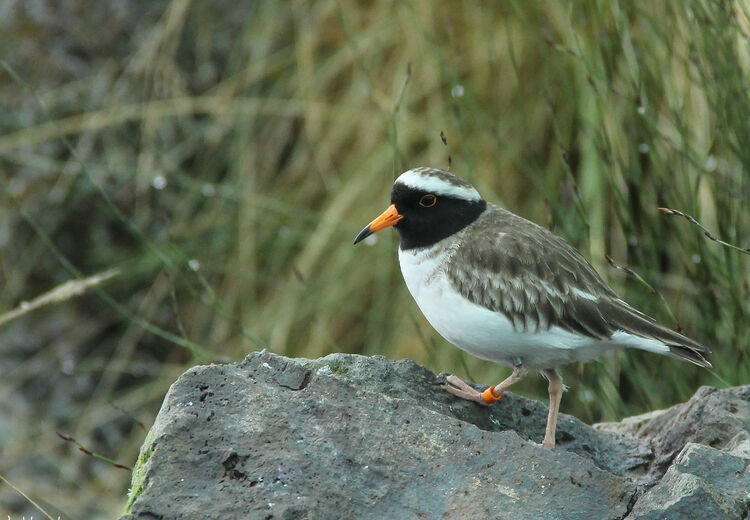Shore Plover
Common name(s) New Zealand Shore Plover/ Tūturuatu
Scientific name Thinornis novaeseelandiae
Threat classification Threatened- nationally critical
Species profile
The endemic New Zealand Shore Plover/Tūturuatu, is a small stocky shore bird which was once commonly found throughout the shoreline of mainland New Zealand. Similar in size and stature to the more common banded dotterel, they inhabit sandy beaches and rocky platforms and feed on a wide variety of marine and terrestrial invertebrates.
Including captive breeding pairs, a total of only approximately 100 pairs of Shore Plover remain in 2020.
Distribution
The last remaining wild population of Shore Plover is now restricted to Rangatira/Southeast and Mangere Islands, which are part of the Chatham Islands Group.
Translocated populations occur on Waikawa/Portland Island, Motutapu Island with more release sites to be determined in the future.
Challenges
Shore Plover can be a difficult bird to manage and breed in captivity. Unlike other plover species in New Zealand, they like to nest under the cover of tussocks and driftwood rather than nesting in the open and relying on camouflage. This combined with being very sensitive to disturbance requires careful monitoring and observation to ensure important events are not missed.
The main challenge to the recovery programme is the Shore Plovers’ susceptibility to both introduced and native predators. This can make establishing and maintaining translocated populations difficult and greatly reduces the number of suitable release locations available.
ICWT contribution to breeding programme
ICWT has been a major contributor to the DOC managed recovery programme since 1998. Up until 2020, ICWT has bred over 250 Shore Plover for release onto predator free islands around New Zealand. The Trust has invested heavily in this programme by constructing a purpose built aviary block to house breeding pairs and a number of juvenile holding aviaries, as well as major staff resourcing as the majority of birds bred in captivity are hand-reared in order to maximise breeding output.
Future aspirations
To continue to support the recovery programme by producing healthy birds for release with the aim of ensuring the long-term survival of this species.
Partnerships
- Department Of Conservation – Species management
- Air New Zealand – Transportation
- Wildbase – Veterinary Advice
- University of Canterbury – Genetic analysis and Population management
- Pūkaha/ Mount Bruce – Captive Breeding Facility
- Cape Sanctuary – Captive Breeding Facility



